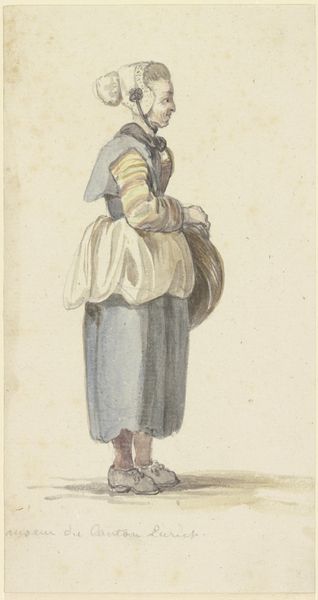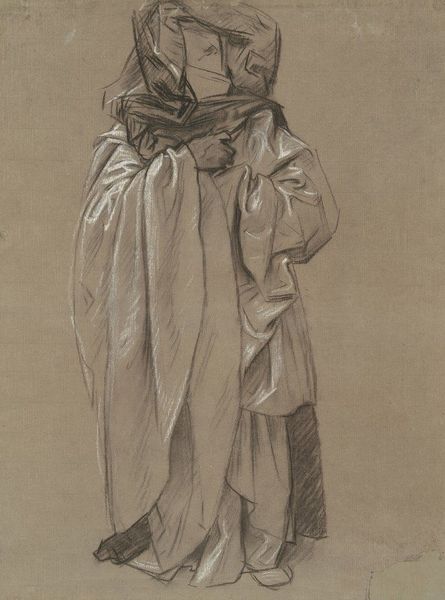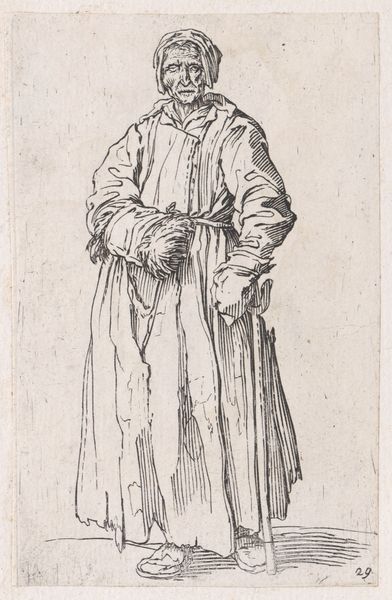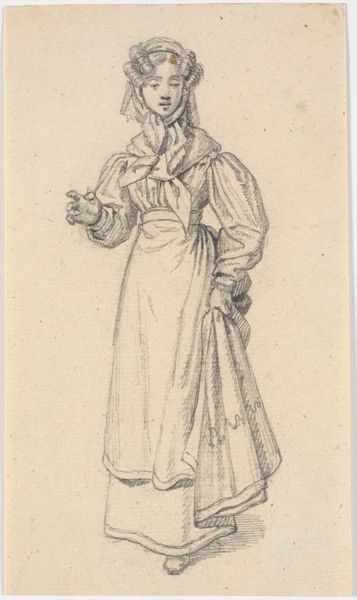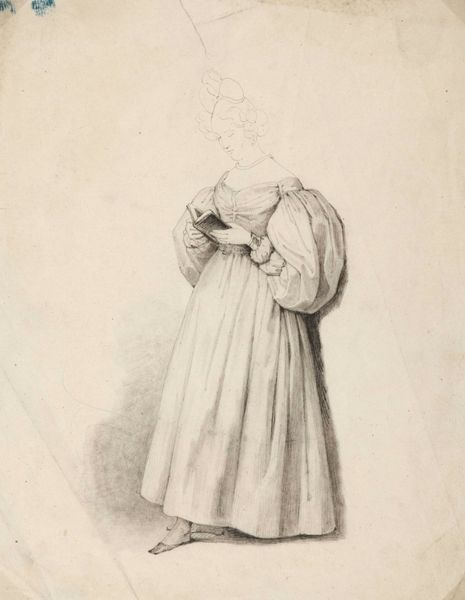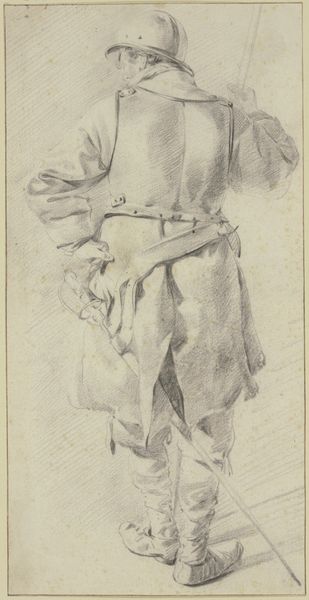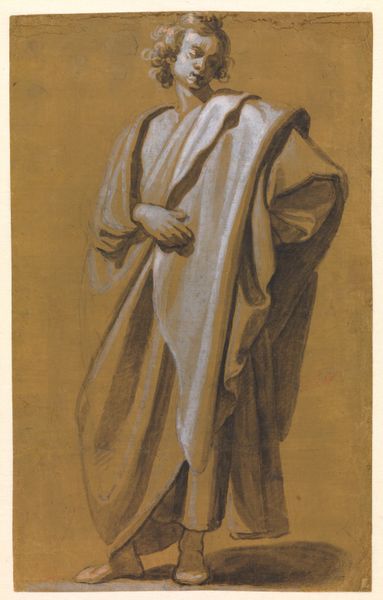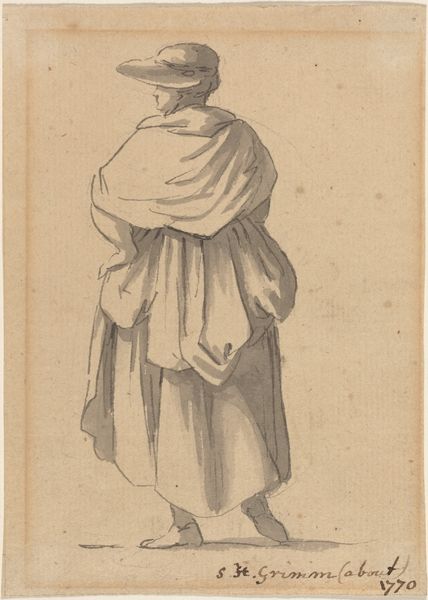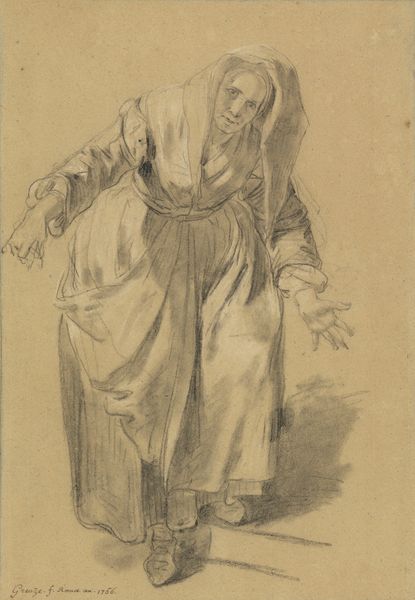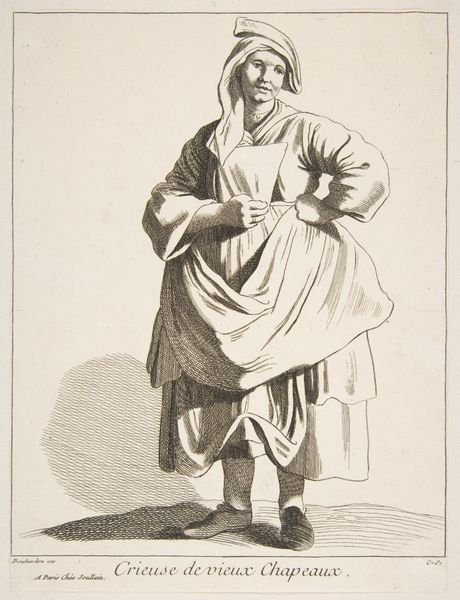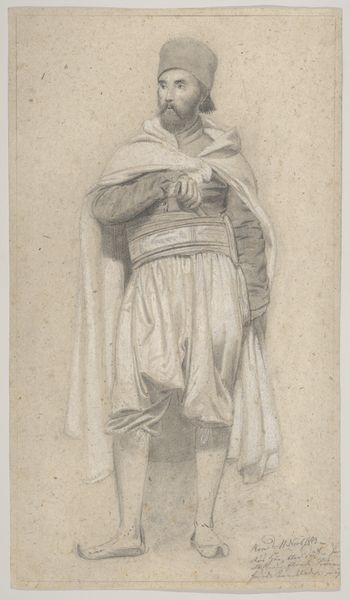
painting, oil-paint, wood
#
portrait
#
baroque
#
painting
#
oil-paint
#
charcoal drawing
#
figuration
#
wood
#
genre-painting
Dimensions: 24.5 cm (height) x 17.7 cm (width) (Netto), 32.8 cm (height) x 26.1 cm (width) x 3.8 cm (depth) (Brutto)
Editor: This is Jean Barbault's "A Roman Cook's Boy Sharpening a Knife," painted around 1750. It’s an oil on wood, and I find its stark simplicity quite compelling. What do you see in this piece from a formalist perspective? Curator: The painting arrests our gaze precisely because of that austere simplicity you noted. Notice how Barbault deploys a limited palette – primarily whites, creams, and greys – to construct the figure and space. The composition is carefully structured: the verticality of the boy’s tunic is subtly echoed by the implied vertical plane of the background, creating a sense of contained monumentality. What do you make of the light? Editor: It’s interesting. The light source seems ambiguous, but it uniformly illuminates the figure. It highlights the folds of the tunic and the planes of his face, but without casting any harsh shadows. Is this deliberate? Curator: Indeed. Barbault isn't interested in dramatic chiaroscuro, typical of Baroque painting. Instead, he utilizes a soft, even light to accentuate the texture and form. Observe how the light gently defines the subtle curve of the boy's arm and the focused concentration conveyed by his slightly downward gaze. What kind of mood does this create? Editor: The muted palette and soft lighting definitely contribute to a somber and contemplative mood, but there’s also something dignified about it. I appreciate your analysis, the focus on the construction through form and light provides an angle I didn’t initially grasp. Curator: The key, as always, is close observation and appreciation for the internal logic of the artwork itself. Editor: I learned so much. Thank you for unveiling the artistic strategy behind this figure.
Comments
statensmuseumforkunst over 1 year ago
⋮
The back of this painting is covered by a semi-transparent, polycarbonate sheet sealed along the edges with foil tape. The front of the painting is behind glass, which is also taped along the inner edges of the frame. This is called a microclimate frame, and ensures that the painting is kept in an airtight space. The construction is not visible from the front. Microclimate framing protects paintings that are particularly sensitive to fluctuations in humidity. This is true of paintings on wood or paintings on canvas that have been lined using glue-paste, i.e. that have had a new piece of canvas glued to the back of the original canvas. When works from the National Gallery of Denmark are on loan to museums with less adequate climatic control, or if a work is to travel over an extensive period of time, we mount fragile works in microclimate frames.
Join the conversation
Join millions of artists and users on Artera today and experience the ultimate creative platform.


